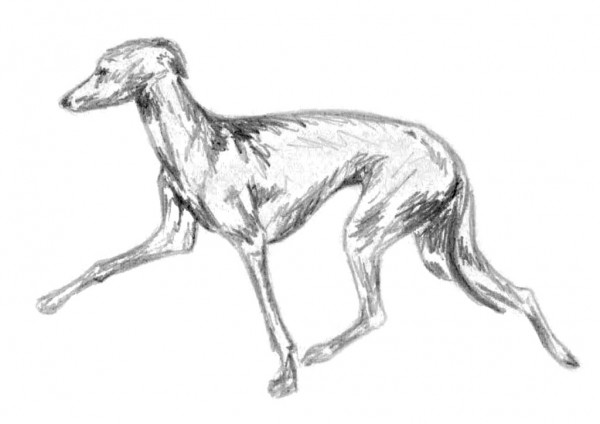δεν ξερω ποιος εισαι αλλα φερε πισω το
@Yorkaddict
Ο λόγος που ρωτάω είναι για να το πάμε ανάποδα και να δούμε γιατί ζητούνται όσα ζητούνται από τα πρότυπα. Είχα κάνει μια προσπάθεια με τα terriers.
Θα με ενδιέφερε να μάθω τι παίζει σε άλλες ομάδες και γιατί για παράδειγμα σε κάποιες φυλές ζητείται ευθύς πίσω γωνίωση - όπως το chow. Τι εξυπηρετούσε;
ή γιατί το italian greyhound κάνει high stepping.
Τι ιδιαιτερότητα έχει στην κατασκευή του και ποιά η χρησιμότητά του;
Μιας και αναφερθήκατε σε
σκύλους έλξης, παρακάτω είναι μερικές από τις σημειώσεις μου που αφορούν τις απαιτήσεις του πίσω και μπροστινού συστήματος αντίστοιχα.
ΠΙΣΩ
Stifles: The stifle joint is a hinge and can be straight or well-bent depending on the purpose of the dog.
Sledge or cart dogs (especially the Arctic dogs) have straighter stifles to aid pushing (dogs push against the ground; the harness pulls the load).
Hock angle: Where the purpose of the dog is to produce a smooth trotting gait, the hock should be well-bent. But if the purpose of the dog is heavy draft, agility or fighting the hocks should be straight or moderately bent.
Principles of rear angulation are:
1. Well-angulated dogs (both stifle and hock) have an advantage in jumping, traveling in burrows and long reach.
2. Dogs with straight hindquarters have an advantage in heavy draft.
3. Moderate angulation is seen on most wild dogs.
ΜΠΡΟΣΤΙΝΟ
Shoulder Blades for Draft: Heavy horses pulling loads often have steep shoulder blades. Oxen, pound for pound, can outpull horses; oxen have very steep shoulder blades. Consider the statement in the Alaskan Malamute Standard: "The shoulders are moderately sloping...". However, the Siberian Husky standard states: "The shoulder blade is well laid back." Siberians were designed for pulling sleds with speed and endurance, not heavy work.
Summary of desirable points of those Arctic dogs that do
HEAVY draft work is as follows:
1. Heavy muscles and heavy weight.
2. Relatively steep shoulder blades.
3. Tendency to straight stifles and hocks.
4. Shorter legs than racing dogs (or longer bodies).
5. Short, heavily muscled neck and heavy head.
6. Widen in the front and rear.
7. Good footing (large feet).
8. Dense coat that readily sheds snow.
9. Well-furred tail.
In motion, heavy draft horses can use lateral instability to aid in pushing (pulling of the harness) by shifting weight in the collar, first to the right and then to the left. At heavy work, wide rears that enable the legs to be well apart are advantages.
Αυτά τα ολίγα

Εχω και άλλες απορίες, αλλά σιγά σιγά.

Ωραίο θέμα Κώστα





